Assessment of the Damage from Hydrogen Pipeline Explosions on People and Buildings
Abstract
:1. Introduction
2. Methodology
2.1. Blast Hazard
- simulation of the jet release of hydrogen and estimation of the size of flammable H2–air clouds using the SLAB model integrated with a model for release rate;
- calculation of the explosion energy and of the consequent explosion characteristics (i.e., peak overpressure and impulse) using the TNO multi-energy method [12]; and
- estimation of the blast hazard function, Pr[E|R], defined as the probability of an explosion E occurring in the case of a rupture R of the pipeline.
2.2. Blast Damage to People
2.3. Blast Damage to Structural Components
2.3.1. RC Columns
2.3.2. TSM Load-Bearing Walls
3. Results and Discussions
4. Prevention and Mitigation Systems
- Remove the hazard, if it is possible
- Use materials with the same features and functions, but that are less hazardous
- Introduce engineering controls in order to isolate the hazard
- Define administrative controls (procedures, indicators, and rules) for workers and any other people who may be involved in the hazard
- Provide personal protective equipment
- (i)
- controlling of third party interference,
- (ii)
- thickening of the pipe,
- (iii)
- non-destructive testing on welds,
- (iv)
- inerting of the pipe,
- (v)
- marking of the pipe,
- (vi)
- installing valves that detect an increase of flux or decrease of pressure,
- (vii)
- mass balancing to individuate a leak,
- (viii)
- burying the pipeline,
- (ix)
- protecting the pipe with suitable coating,
- (x)
- operating procedures (i.e., inspections programs, corrosion control programs, emergency plan).
5. Conclusions
Author Contributions
Funding
Conflicts of Interest
References
- Merchdant Hydrogen Plant Capacities. Available online: https://h2tools.org/hyarc/hydrogen-production (accessed on 20 March 2019).
- Linde Engineering News. Available online: https://www.lindeengineering.com/en/news and media/press releases/news-20190228 (accessed on 20 March 2019).
- Eurostat Data of Statistics on the Production of Manufactured Goods. Available online: http://ec.europa.eu/eurostat/web/main (accessed on 20 March 2019).
- Hydrogen Pipelines. Available online: https://h2tools.org/hyarc/hydrogen-delivery (accessed on 20 March 2019).
- Zhang, X.; Xiao, L. Analysis of hazardous chemicals transportation accidents and transportation management. Chem. Eng. Trans. 2018, 67, 745–750. [Google Scholar]
- Rusin, A.; Stolecka, K. Hazards associated with hydrogen infrastructure. J. Power Technol. 2017, 97, 153–157. [Google Scholar]
- Crowl, D.A. Understanding Explosions; American Institute of Chemical Engineers: New York, NY, USA, 2003. [Google Scholar]
- Gerboni, R.; Salvador, E. Hydrogen transportation system: Elements of risk analysis. Energy J. 2009, 34, 2223–2229. [Google Scholar] [CrossRef]
- Russo, P.; De Marco, A.; Parisi, F. Failure of concrete and tuff stone masonry buildings as consequence of hydrogen pipeline explosions. Int. J. Hydrog. Energy 2019, 44, 21067–21079. [Google Scholar]
- Russo, P.; Parisi, F. Risk-targeted safety distance of reinforced concrete buildings from natural-gas transmission pipelines. Reliab. Eng. Syst. Saf. 2016, 148, 57–66. [Google Scholar] [CrossRef]
- Ermak, D.L. SLAB an atmospheric dispersion model for denser than air releases. In UCRL-MA-105607; Lawrence Livermore National Laboratory: Livermore, CA, USA, 1990. [Google Scholar]
- TNO. Methods for the calculation of physical effects due to releases of hazardous materials (liquid and gases). In Yellow Book; Van den Bosh, C.J.H., Weterings, R.A.P.M., Eds.; TNO: The Hague, The Netherlands, 2005. [Google Scholar]
- Pasquill, F. The estimation of the dispersion of windborne material. Meteorol. Mag. 1961, 90, 33–49. [Google Scholar]
- PHMSA. Gas Distribution, Gas Gathering, Gas Transmission, Hazardous Liquids, Liquefied Natural Gas (LNG) and Underground Natural Gas Storage (UNGS) Annual Report Data. Available online: https://www.phmsa.dot.gov/data-and-statistics/pipeline/gas-distribution-gas-gathering-gas-transmission-hazardous-liquids (accessed on 16 June 2018).
- Bedel, L.; Junker, M. Natural gas pipelines for hydrogen transportation. In Proceedings of the 16th World Hydrogen Energy Conference (WHEC 2006), Lyon, France, 13–16 June 2006; pp. 1006–1010, ISBN 9781622765409. [Google Scholar]
- Air Liquide. Questions and issues on hydrogen pipelines, pipeline transmission of hydrogen. In Proceedings of the Doe Hydrogen Pipeline Working Group Meeting, 31 August 2005; Available online: https://www.energy.gov/sites/prod/files/2014/03/f10/hpwgw_questissues_campbell.pdf (accessed on 20 March 2019).
- EGIG. 8th Report of the European Gas Pipeline Incident Data Group; European Gas Pipeline Incident Data Group: Groningen, The Netherlands, 2011. [Google Scholar]
- Melani, L.; Sochet, I.; Rocourt, X.; Jallais, S. Review of methods for estimating the overpressure and impulse resulting from a hydrogen explosion in a confined. In Proceedings of the ICH2009 International Conference on Hydrogen Safety, Ajaccio, France, 16–18 September 2009. [Google Scholar]
- HyResponse Grant agreement No: 325348. Lecture-Harm Criteria for People and Environment, Damage Criteria for Structures and Equipment; Tretsiakova-McNally, S., Ed.; Ulster University: London, UK, 2016. [Google Scholar]
- TNO. Methods for the determination of possible damage. In Green Book; CPR 16E; The Netherlands Organization of Applied Scientific Research: The Hague, The Netherlands, 1989. [Google Scholar]
- LaChance, J.; Tchouvelev, A.; Engebo, A. Development of uniform harm criteria for use in quantitative risk analysis of the hydrogen infrastructure. Int. J. Hydrog. Energy 2011, 36, 2381–2388. [Google Scholar]
- HSE. Methods of Approximation and Determination of Human Vulnerability for Offshore Major Accident Hazard Assessment; UK 2010 SPC/Tech/OSD/30; HSE: Buxton, UK, 2013. [Google Scholar]
- Crowl, D.A.; Louvar, J. Chemical Process Safety Fundamentals with Applications, 3rd ed.; Prentice Hall: Upper Saddle River, NJ, USA, 2011. [Google Scholar]
- Jeffries, R.M.; Gould, L.; Anastasiou, D.; Franks, A.P. Derivation of Fatality Probability Functions for Occupants of Buildings Subject to Blast Loads. In Probabilistic Safety Assessment and Management’96; Cacciabue, P.C., Papazoglou, I.A., Eds.; Springer: London, UK, 1996. [Google Scholar] [CrossRef]
- NFPA. Hydrogen Technologies Code; NFPA: Quincy, MA, USA, 2011. [Google Scholar]
- AIChE. Center for chemical process safety. In Guidance for Consequence Analysis of Chemical Releases; American Institute of Chemical Engineers: New York, NY, USA, 1999. [Google Scholar]
- CCPS. Guidelines for Evaluating the Characteristics of Vapour Cloud Explosions, Flash Fires and BLEVEs; American Institute of Chemical Engineering: New York, NY, USA, 1994. [Google Scholar]
- Federal Emergency Management Agency. Handbook of Chemical Hazard Analysis Procedures; Federal Emergency Management Agency: Washington, DC, USA, 1987. [Google Scholar]
- Parisi, F. Blast fragility and performance-based pressure- impulse diagrams of European reinforced concrete columns. Eng. Struct. 2015, 103, 285–297. [Google Scholar] [CrossRef]
- Parisi, F.; Balestrieri, C.; Asprone, D. Blast resistance of tuff stone masonry walls. Eng. Struct. 2016, 113, 233–244. [Google Scholar] [CrossRef]
- EIGA. Determination of Safety Distances; IGC Doc 75/07/E. Revision of Doc 75/01/rev; European Industrial Gases Association: Brussels, Belgium, 2007. [Google Scholar]
- DNV GL AS Maritime Advisory. Risk acceptance criteria and risk based damage stability. In Final Report, Part 1: Risk Acceptance Criteria: DNV GL; Report No.: 2015-0165, Rev 2; DNV GL AS Maritime Advisory: Hovik, Norway, 2015. [Google Scholar]
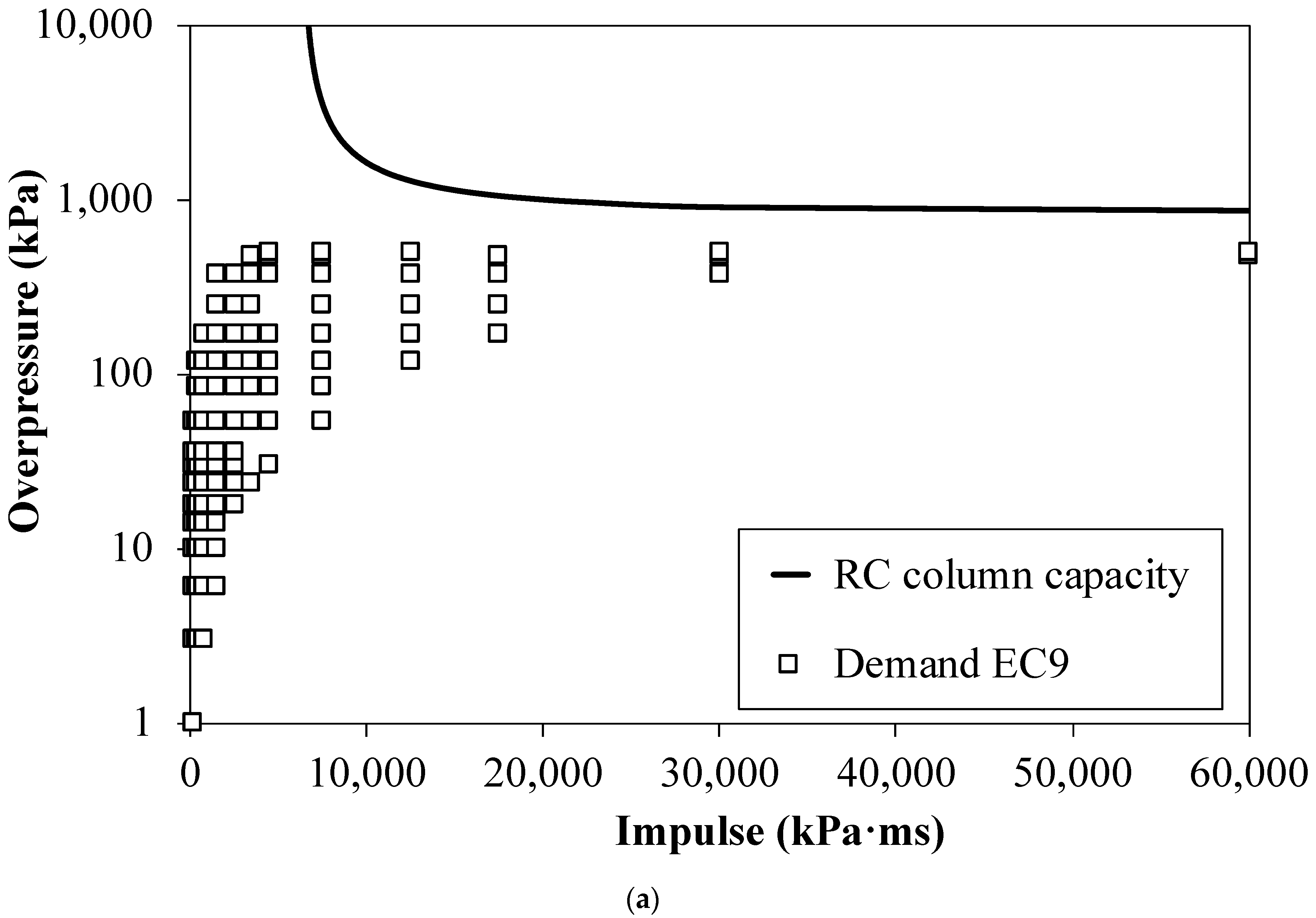
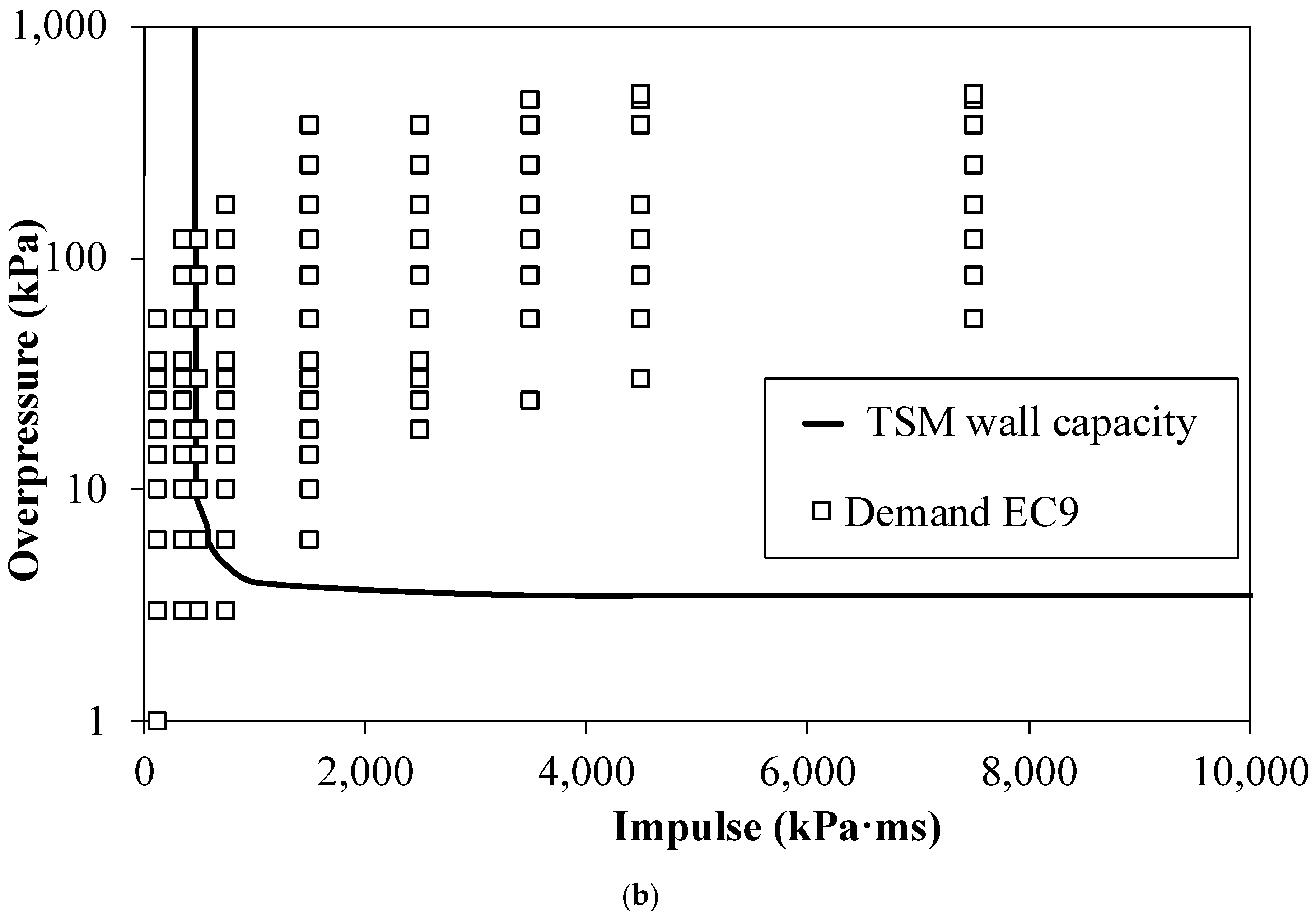
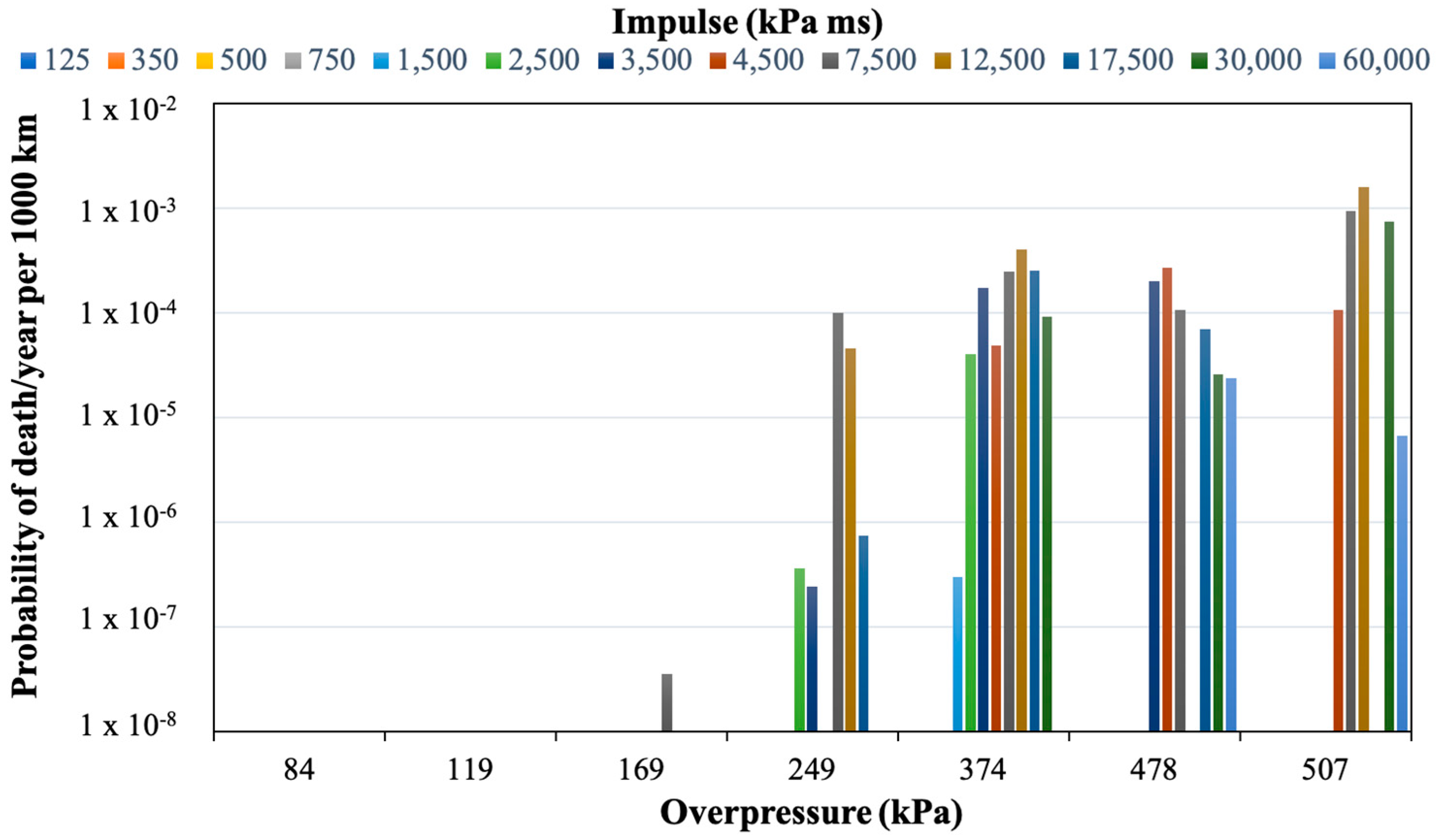

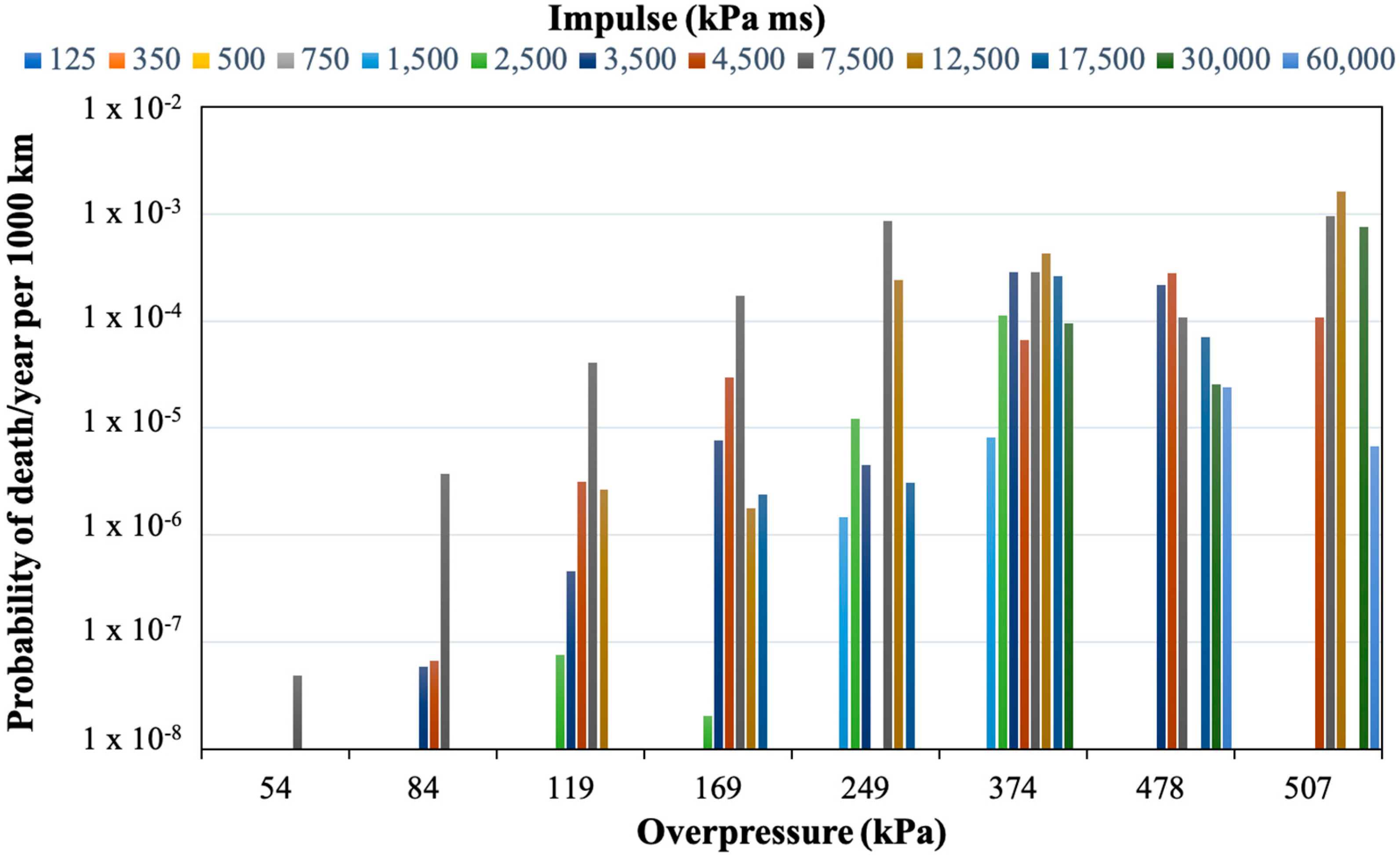

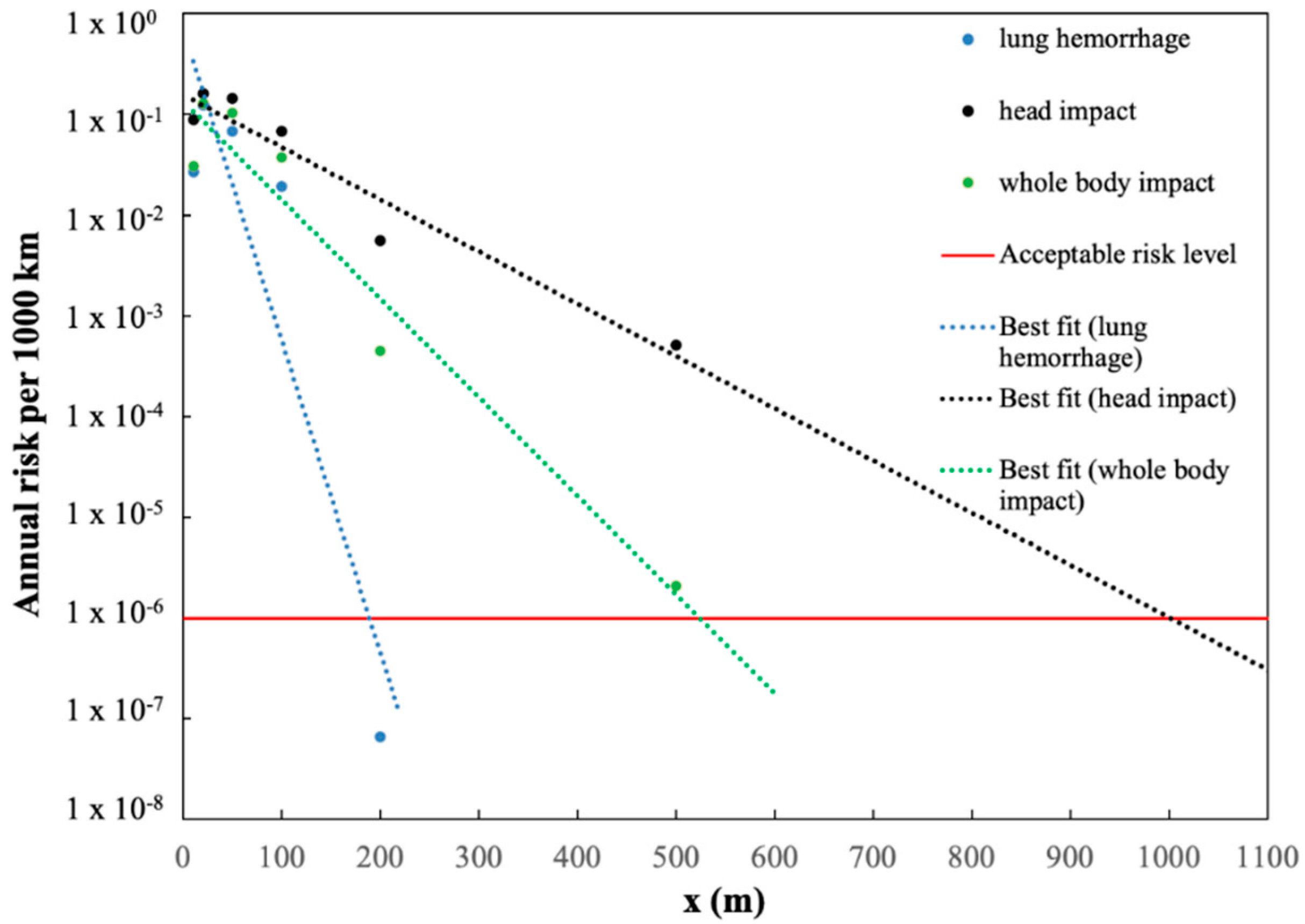
| Company | Capacity (Nm3/h) | |||
|---|---|---|---|---|
| Europe | Asia | North America | Rest of the world | |
| Air Liquide | 770,505 | 730,846 | 830,326 | 89,283 |
| Air Products | 258,038 | 419,694 | 3,279,494 | 5200 |
| Linde | 657,129 | 223,258 | 542,218 | 105,051 |
| Praxair | 13,500 | 197,304 | 2,201,225 | 13,396 |
| Deokyang | - | 111,000 | - | - |
| Hyundai-Wison | - | - | - | 301,411 |
| Others | 58,860 | 57,761 | 49,672 | - |
| Total | 1,758,031 | 1,739,863 | 6,902,934 | 514,341 |
| Parameter | Assumption |
|---|---|
| Source type | Horizontal jet release |
| Temperature of source material, K | 200 |
| Duration of continuous source, s | 600 |
| Height of source, m | 1 |
| Time of concentration averaging, s | 30 |
| Maximum downwind distance, m | 300 |
| Height of surface roughness, m | 0.003 |
| Wind speed, m/s | 2 and 5 |
| Height of wind measurement, m | 10 |
| Ambient temperature, K | 283 |
| Relative humidity, % | 75 |
| Pasquill atmospheric stability class | A, C, D, F |
| Pipeline diameter (d), m | 0.1016–0.508 |
| Operating pressure (Po), kPa | 649–12,800 |
| Hole diameter (dhole), m | 0.02–d |
| Length of pipeline from the compression station to the release point (L), m | 50–10,000 |
| Distance from explosion center (r), m | 10–2000 |
| Explosive class | 6 and 9 |
| Damage | Probit Equation |
|---|---|
| Deaths from lung hemorrhage | Y = Y = 5 − 5.74 ln (4.2 Pa/Pef + 1.3/Isc) a [20] |
| Deaths from head impact | Y = 5 − 8.49 ln (2430/Ps + 4 × 108/Ps I) b [20] |
| Deaths from whole-body impact | Y = 5 − 2.44 ln (7380/Ps + 1.3 × 109/Ps I) b [20] |
| Injuries from ear-drum rupture | Y = −12.6+ 1.524 Ps c [23] |
© 2020 by the authors. Licensee MDPI, Basel, Switzerland. This article is an open access article distributed under the terms and conditions of the Creative Commons Attribution (CC BY) license (http://creativecommons.org/licenses/by/4.0/).
Share and Cite
Russo, P.; De Marco, A.; Parisi, F. Assessment of the Damage from Hydrogen Pipeline Explosions on People and Buildings. Energies 2020, 13, 5051. https://doi.org/10.3390/en13195051
Russo P, De Marco A, Parisi F. Assessment of the Damage from Hydrogen Pipeline Explosions on People and Buildings. Energies. 2020; 13(19):5051. https://doi.org/10.3390/en13195051
Chicago/Turabian StyleRusso, Paola, Alessandra De Marco, and Fulvio Parisi. 2020. "Assessment of the Damage from Hydrogen Pipeline Explosions on People and Buildings" Energies 13, no. 19: 5051. https://doi.org/10.3390/en13195051







